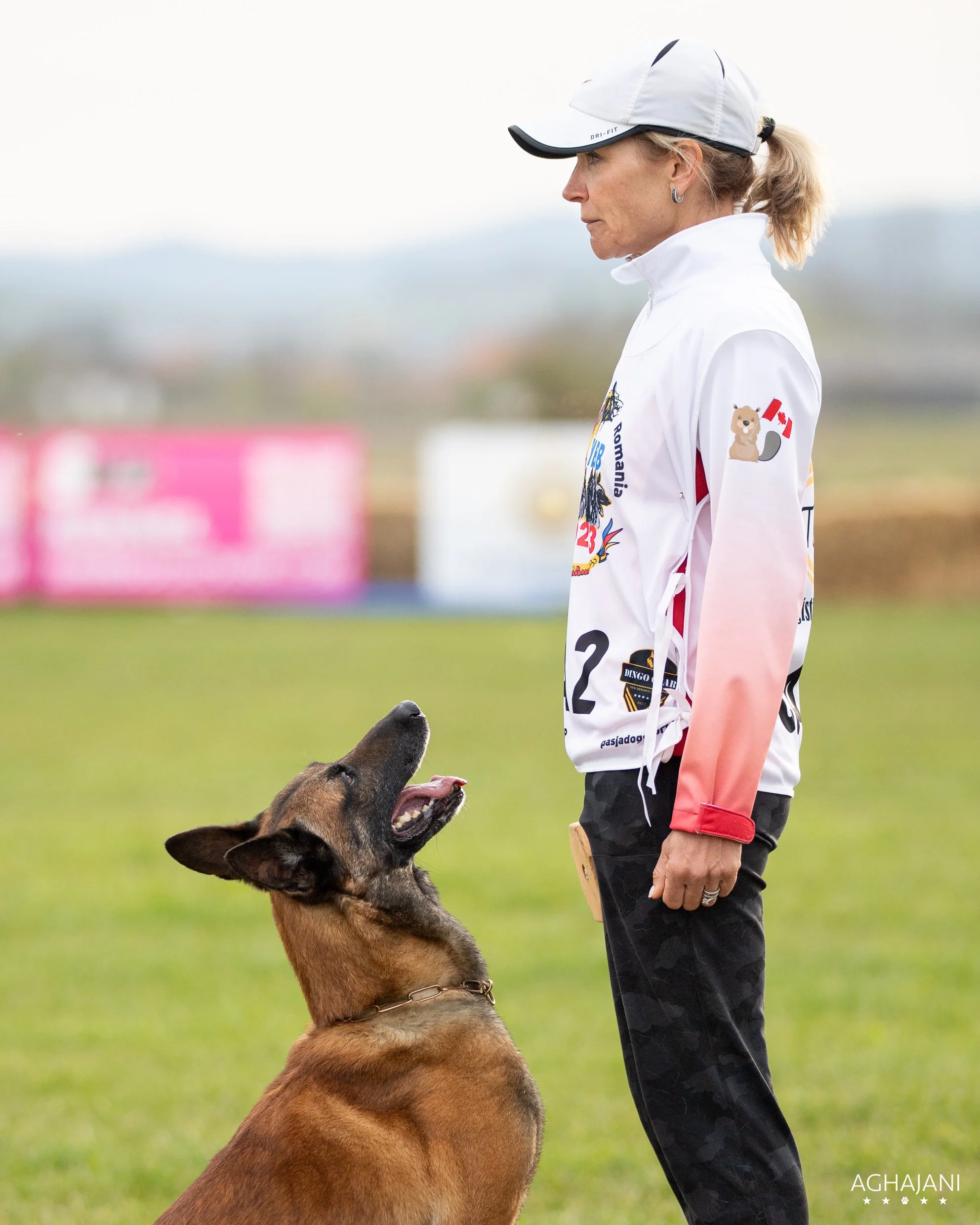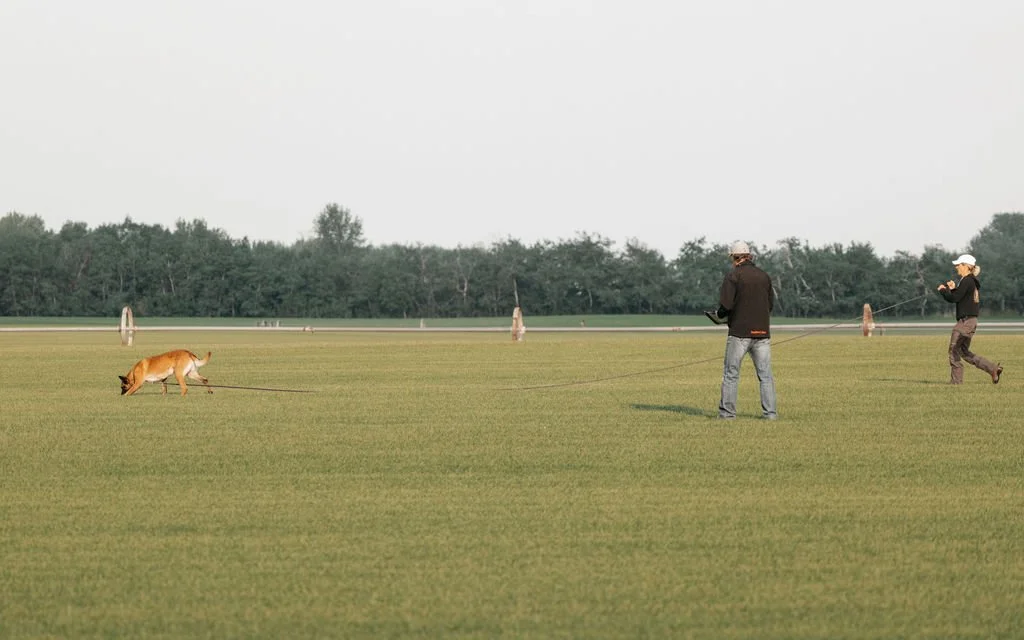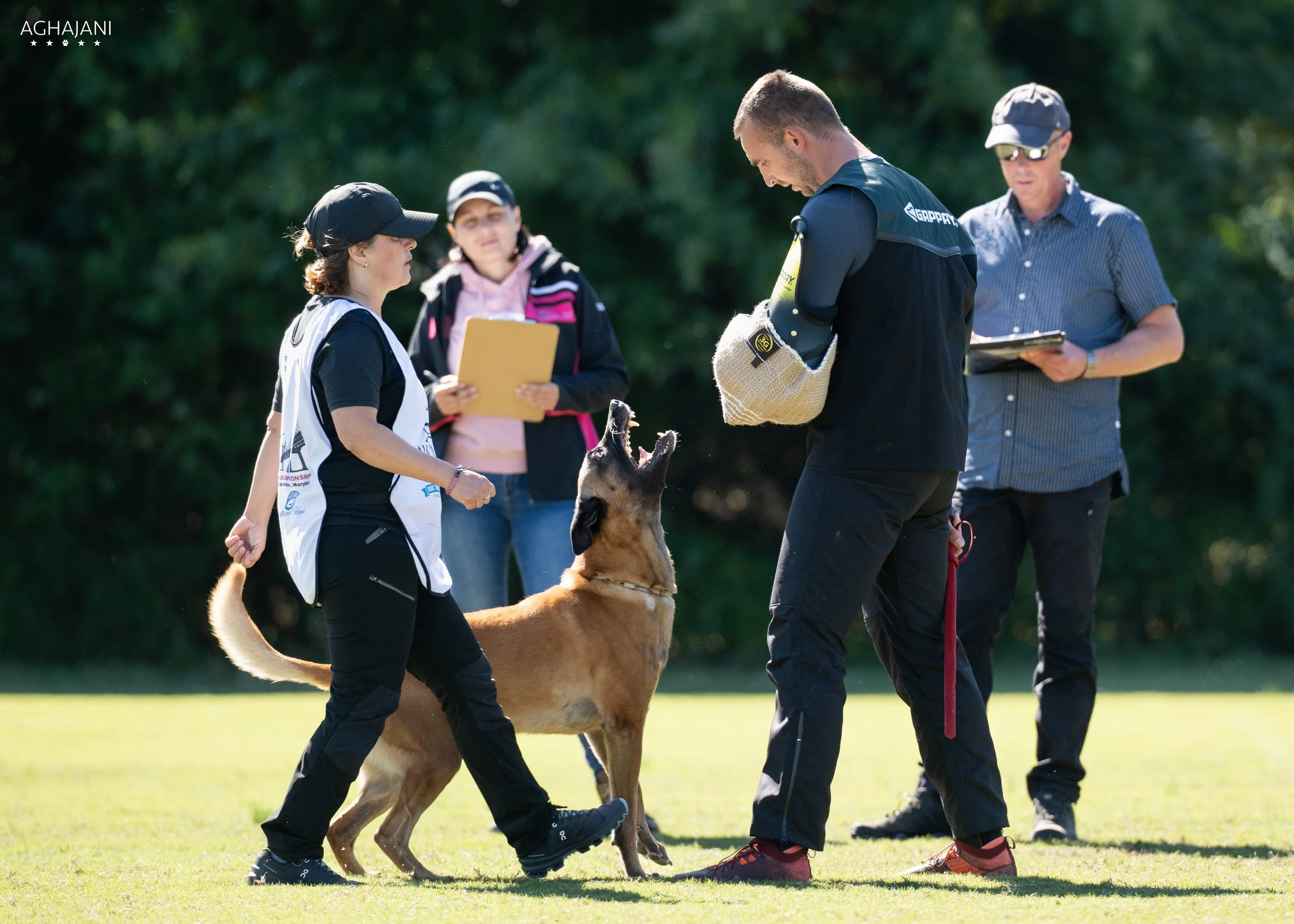
Our Objectives
The objectives of this association shall be to preserve the Belgian Shepherd Dog in accordance with the Breed Standard as a working dog.
1. Promote IGP (International Utility Dog trial regulations) training for the working dog, to promote humane training methods for the working dog, and to support responsible dog ownership and breeding practices.
2. Develop, qualify, and license local clubs in Canada and its possessions so that they may conduct IGP trials and tracking tests for the FH degree (Faehrtenhundpruefung).
3. Develop, as decided by the Board of Directors, any other tests to ensure the further development and maintenance of the Belgian Shepherd Dog as a working dog, and to encourage local clubs to implement these tests.
4. Promote training of working dogs among the youth.
5. Support the use of working dogs for search and rescue work, police work, customs and border patrol work, guide dog work, scenting work and in other ways for which working dogs are utilized.
6. Produce a vehicle of communication to promote the objectives of the association.
7. Encourage CWBSA members to become members of the Belgian Shepherd Dog Club of Canada (BSDCC) and register their dogs with the Canadian Kennel Club (CKC). The CWBSA is a Branch Club of the BSDCC since 2020.
8. Conduct annually a National championship and/or selection trials and/or implement a point system to select a team to represent Canada at the FMBB IGP World Championship
Today, IGP is an internationally recognized sport for all working breeds, regulated by the FCI Utility Dog Commission (link). It is designed to develop and evaluate key traits in dogs such as drive, courage, intelligence, trainability, perseverance, and a strong bond with the handler. Physical qualities like strength, endurance, agility, and scenting ability are also put to the test.
The ultimate goal of IGP is to reveal a dog’s true character and working potential through structured training. This insight is especially valuable to breeders when selecting dogs to help shape the next generation of working dogs.
The sport is divided into three phases:
Tracking
Obedience
Protection
Each phase is scored out of 100 points, with 70 as the minimum passing score. There are three levels of difficulty—IGP 1, 2, and 3—with each level building on the last.Dogs don’t need to train in all three phases to participate. IGP also offers single-discipline titles:
Tracking (FPr 1–3)
Obedience (UPr 1–3)
Protection (SPr 1–3)
As well as advanced tracking titles: IFH1, IFH2, and IGP-FH
Before pursuing any IGP title, all dogs must first pass the BH/VT test—an evaluation of basic obedience, temperament, and sociability in public.
See the 2025 IGP Rulebook for the latest updates and regulations.
BH Written Test
IGP is an acronym for Internationale Gebrauchshunde Prüfungsordnung, a German name meaning "International Working Dog Trial Regulations", formerly also known as "IPO" and "Schutzhund" ( translates to "protection dog" in German).
Schutzhund evolved over 110 years ago in Europe as a way of testing German Shepherd dogs for their suitability for use in breeding programs.
What is IGP?
How Does it Work?
There are three phases of the sport: tracking, obedience and protection.
Each phase is scored out of a possible 100 points, with a minimum passing score of 70. There are three levels in IGP (IGP 1-3), and each level increases in difficulty.
Tracking
The tracking phase assesses the dog’s ability to follow a scent trail with precision while testing both mental and physical endurance. In IGP tracking, the focus is on the dog’s precision and intensity, rather than speed.
Key Exercises:
Temperament Test: Before starting, the dog must pass a temperament test to ensure it is not aggressive or shy.
Tracking: The dog follows a path (300-600 paces) that is 20-60 minutes old, with 2-4 turns, and must find and indicate 3 articles dropped along the track.
Tracking Line: The handler stays at the end of a 33ft tracking line, guiding the dog through the track.
Surface: The tracking is done on grass or dirt.
The purpose of this phase is to evaluate the dog’s precision, endurance, and focus in following the scent trail. The dog must demonstrate the ability to track with intensity and accuracy, even under challenging conditions.
An IFH1 or 2 level track is more difficult, requiring even greater skill and focus.
Obedience
The obedience phase tests the dog’s willingness to work closely with the handler in a precise, attentive, and energetic manner. It also evaluates the dog’s agility and temperament, with each level increasing in difficulty.
Key Exercises:
Heeling: The dog must walk by the handler's side, even while subjected to a gunshot test to assess their reaction to loud noises.
Motion Exercises: The dog is required to sit, down, or stand while the handler continues to move, and may be asked to recall from these positions.
Retrieve Exercises: The dog retrieves dumbbells of varying weights, first on a flat surface, then over a one-meter hurdle, and finally over a 1.8-meter scaling wall.
Send-out: The dog must run in a straight line away from the handler and lie down on command.
Distraction Down: The dog must lie down under distraction while another dog works nearby.
The purpose of this phase is to assess the dog’s obedience, focus, and temperament in various situations, ensuring they can perform with precision and enthusiasm. All exercises are done off-leash, except during the BH (Begleithunde) test.
Protection
The protection phase assesses the dog's ability to follow directions while searching for and confronting an unknown man, called the "helper," under the full control of the handler. The dog must have a balanced temperament, self-confidence, agility, physical strength, and the ability to switch focus between confronting the helper and obeying the handler.
Key Exercises:
Search: The dog searches the field’s blinds (hiding spots) for the helper, who wears a heavily padded sleeve on one arm.
Barking: Upon finding the helper, the dog must bark to alert the handler.
Guarding: The dog guards the helper to prevent movement until recalled by the handler.
Confrontation: The helper may either confront the dog or attempt to escape, and the dog must stop the threat by biting the padded sleeve.
Release: Upon the handler’s command, the dog must immediately release the sleeve.
The purpose of this phase is to evaluate the dog’s drive, focus, and obedience under pressure. It tests the dog's ability to engage the helper, remain in control, and switch between offense and obedience in a high-drive situation.
The dog must show enthusiasm and commitment. Any sign of fear, lack of control, or inappropriate aggression results in dismissal from the competition.
IGP isn’t just a sport—it’s a journey that strengthens the bond between dog and handler through training, teamwork, and trust. Whether you're aiming for titles or simply looking to challenge yourself and your dog, IGP offers a rewarding path filled with growth and connection.
People of all ages, backgrounds, and abilities come together to share in the thrill of working with their dogs. From first-time handlers to seasoned trainers, the community is united by a deep respect for the power and potential of the working dog.
For high-energy breeds like the Belgian Shepherd, IGP offers the structure and purpose they crave—making them not only exceptional competitors but also happier companions at home.
Contact
We are happy to answer any questions .




